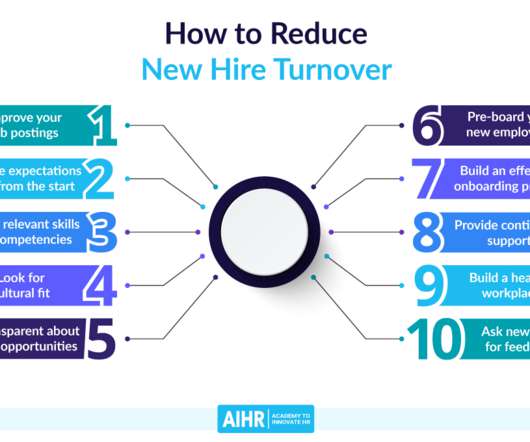Understanding employee turnover rates
Achievers
SEPTEMBER 12, 2024
Employee turnover rates are a crucial metric for organizations to monitor, as they show how frequently employees leave the company. Beyond just tracking numbers, understanding turnover rates requires identifying the root causes of employee departures and developing effective retention strategies in response.






















































Let's personalize your content